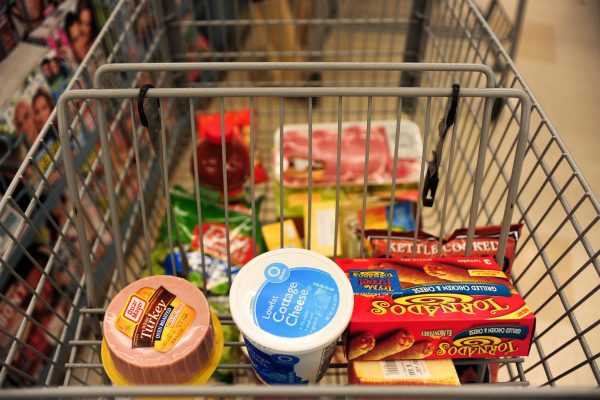
The Wall Street Journal recently interviewed Estefani Iraheta, a mother of two who requested donated food from her local Salvation Army when the pandemic hit. Every time she goes to pick up the canned food and staples, more people are waiting in line with her, seeking food for their families. As of August 2020, an estimated 12 percent of U.S. households, or roughly 1 in 8 U.S. households, did not have enough food within the last week; for U.S. households with children, nearly 20% stated they did not have enough food the previous week.
Food insecurity refers to inconsistent access to sufficient, nutritious food that is necessary to live a healthy life. While hunger is a related issue, food insecurity is fundamentally about a lack of household resources. And the COVID-pandemic has worsened U.S. food insecurity by increasing unemployment, raising food prices, and closing schools.
Schools are a vital institution, not only for learning but also for access to social services, including regular meals. From kindergarten to college, many schools offer a dependable source of community support and reliable access to food. Even before the pandemic, however, food insecurity has been a critical issue for U.S. students. In recent years, researchers have investigated how educational institutions handle this issue.
- Amy Shanafelt, Mary O. Hearst, Qi Wang, Marilyn S. Nanney, 2016. Food insecurity and rural adolescent personal health, home, and academic environments. Journal of School Health 86: 472-480.
- The Urban Institute and Feeding America, 2016. The Impossible Choice: Teens and Food Insecurity in America.
- Brian Elbel, Kosuke Tamura, Zachary T. McDermott, et al. 2019. Disparities in food access around homes and schools for New York City children. PLoS ONE 14(6).
- Amy Best, 2017. Fast-Food Kids: French Fries, Lunch Lines, and Social Ties. New York: New York University Press.
- Joy Rayanne Piontak, Michael D. Shulman, 2014. Food Insecurity in Rural America. Contexts.
More recently, scholars have focused on the prevalence of food insecurity among college students, who are often viewed as a privileged group. In particular, research has devoted attention to how colleges do, or do not, address food insecurity.
- Katharine M. Broton, and Clare L. Cady, ed. 2020. Food Insecurity on Campus : Action and Intervention. Johns Hopkins University Press.
- Nicholas Freudenberg, Sara Goldrick-Rab & Janet Poppendieck, 2019. “College students and SNAP: The new face of food insecurity in the United States.” American Journal of Public Health. Dec;109(12):1652-1658.
Food insecurity is only one consequence of a larger societal issue: poverty and precarity in the United States. In 2019, approximately 34 million Americans were living in poverty, or 10% of the U.S. population. It’s important to recognize that poverty is structured not just by income, but by race, gender, citizenship, and other factors. Here are some key sociological resources on the experience of living poverty in the United States.
- Kathryn Edin and Luke Shaefer, 2015. $2 A Day: Living on Almost Nothing in America. Mariner Books.
- Barbara Ehrenreich, 2011. Nickel and Dimed: On (Not) Getting By in America. Picador.
- Matthew Desmond, 2016. Evicted: Poverty and Profit in the American City. Penguin Random House.David K. Shipler, 2004. The Working Poor: Invisible in America. Penguin Random House.
For more news coverage on food insecurity during the COVID-19 crisis in the United States, view The New York Times’ recent article and photo essay.

Comments